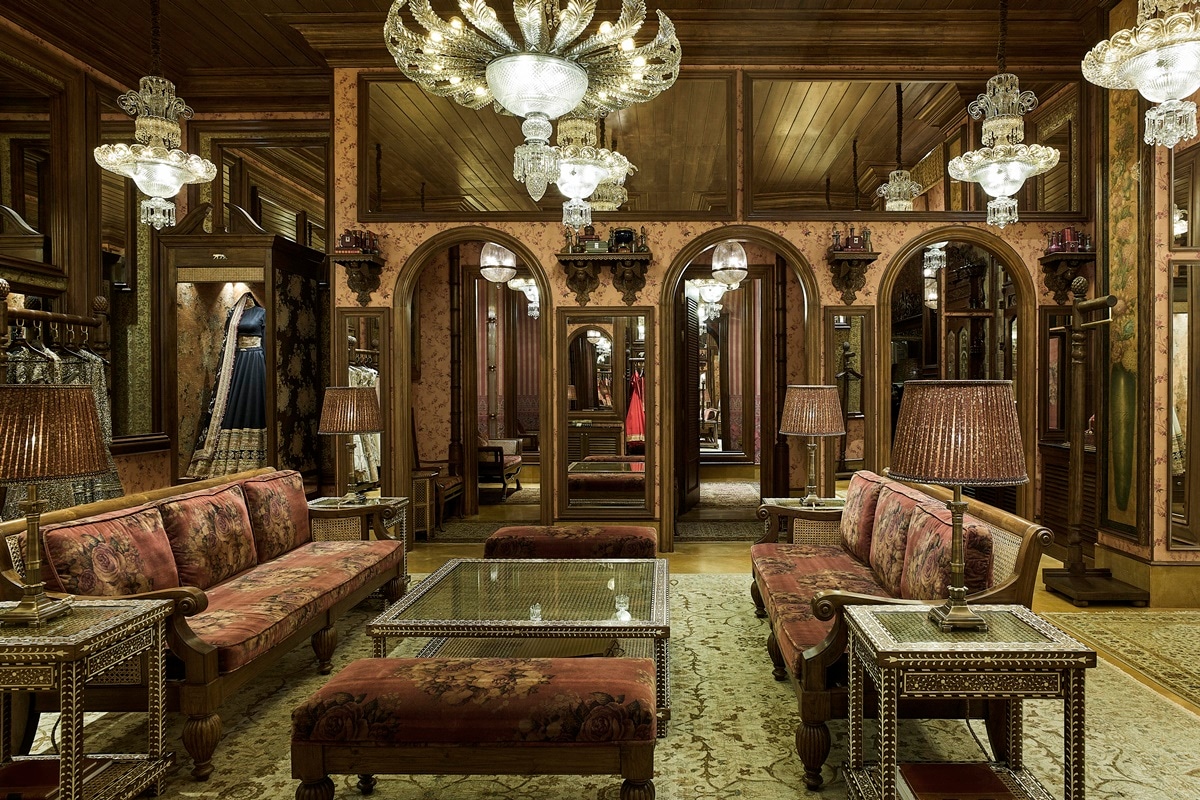📣 For more lifestyle news, click here to join our WhatsApp Channel and also follow us on Instagram
‘It’s because of my middle-class roots that I ended up doing what I do’: Designer Sabyasachi Mukherjee
The Kolkata-based designer on how his grandmothers influenced his aesthetics and why his craft is rooted in India
 Sabyasachi Mukherjee on his design inspiration (Source: Sabyasachi Mukherjee/Facebook)
Sabyasachi Mukherjee on his design inspiration (Source: Sabyasachi Mukherjee/Facebook)Culture, craft and heritage are at the root of what I do, and all three are fundamentally rooted in storytelling. We are all made up of stories, after all,” says designer Sabyasachi Mukherjee, 49, in an email interview, following the recent launch of his new flagship store in Mumbai’s iconic Horniman Circle. Spread across 25,000 sq ft, the palatial museum-like store houses all his offerings — high-end bridalwear on the ground floor, fine jewellery on the first, and accessories, including his signature clutch and belt alongside menswear, on the second floor. Large pieces of framed textiles and paintings, some featuring Tanjore, Pichhwai, Nathdwara and Kota style, adorn the walls. On the floor are handcrafted carpets, while Mughal miniatures, rare lithographs, brass sculptures and books are strewn across the store.
In this interview, Mukherjee shares his vision for the store, the influence of his grandmothers on his aesthetics and why his craft is rooted in India.
Excerpts:
Why did you feel the need for a flagship store in the post-pandemic market? What was your vision for the store when you decided to launch it in Mumbai?
It was a move that was born out of necessity. Both jewellery and accessories were categories that were launched recently and had seen exponential growth. Simply put, we grew out of our old store. I also wanted to future-proof the business with a store large and immersive enough to frame the world of the brand as we expand and grow our categories. This was the first property I saw and the second I laid eyes on it, I knew it would not get more beautiful than this. As far as the post-pandemic world goes, I think we need physical and immersive experiences now more than ever, far away from our screens.
 An inside glimpse of the store (Source: Björn Wallander)
An inside glimpse of the store (Source: Björn Wallander)
When it comes to my stores, the hoarder and compulsive collector in me finds expression. The art is both commissioned and acquired – works from the Sabyasachi Art Foundation inspired by Persian Qajars and Company Paintings are layered between age-old Pichhwais and Tanjores, which have been sourced from antique and art dealers; family portraits found in souks and bazaars from across the world lie beside ancient textiles and exquisite works by master craftspeople. I believe art, craft and culture should be for people to experience. I imagined the Mumbai store as a living museum.
You hail from a middle-class Bengali family. Did you ever see yourself as a maximalist guy? How closely or remotely do you associate yourself with this term?
I think it’s because of my middle-class roots that I ended up doing what I do. The creative bug bit me early on and it found expression in various things that I did growing up, whether it was producing school plays with dyed jute for wigs and stolen clothes from my mother’s wardrobe or starting a costume jewellery business when I was a young adult.
I’m as close as I am removed from maximalism. My paternal grandmother was a very severe person and an absolute minimalist. She wore Khadi saris, took cold water baths, was strictly vegetarian and well read. My maternal grandmother was the exact opposite — she was indulgent, hilarious and an absolute maximalist, (dressed) always in bright Benarasis and lots of jewellery. These are the two women who have shaped both my thinking and aesthetics.
 New flagship store in Mumbai’s iconic Horniman Circle (Source: Björn Wallander)
New flagship store in Mumbai’s iconic Horniman Circle (Source: Björn Wallander)
How long did it take before you figured out what exactly you wanted to create? What would you call a turning point in your life as a designer?
As I immersed myself more in Indian crafts and heritage textiles, I think I saw the way ahead for my own perspective and aesthetic to evolve. I think a big turning point was showing at New York Fashion Week (in 2006). This was at the start of my career, I was very young and I remember getting a decent response. I was in conversation with Suzy Menkes (British fashion journalist) who asked me why I was in New York, and not exploring the potential of my own country. That thought stayed with me, and on my way back home, I decided that I had to make it big in my own country first. It was quite the turning point.
What do you think the label Sabyasachi means today? And, what’s next for it?
I think we’re a brand rooted in the finest of craftsmanship, heritage and culture. There’s a certain authenticity that has been fine-tuned with time and maturity. Today, as a brand, we know exactly who we are and where we’re headed. We have a few global collaborations coming up but we can’t talk about it yet.
📣 For more lifestyle news, click here to join our WhatsApp Channel and also follow us on Instagram
Photos





- 01
- 02
- 03
- 04
- 05






















